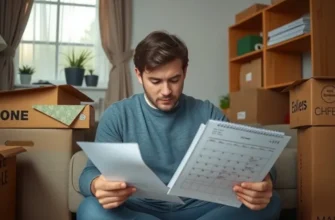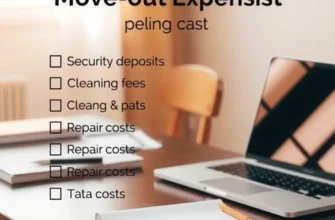Renting your first apartment can be both exciting and nerve-wracking. For young professionals, first-time renters, students, couples, and families, understanding security deposit laws is crucial to ensure financial clarity and a smooth leasing experience. Security deposits, which landlords require before you move in, can often lead to confusion and disputes. With the right knowledge, you can protect your finances and your rental rights. Each state in the U.S. has its own unique laws governing security deposits, including how much a landlord can charge, the timeframe for returning the deposit, and the reasons it may be withheld. This guide aims to equip you with trustworthy information to simplify navigating the often-overwhelming rental landscape, making your transition into your new home as seamless as possible.
What You Need to Know About Security Deposits

Security deposits are a crucial aspect of renting, serving as both a safeguard for landlords and a financial consideration for tenants. At its core, a security deposit is a sum of money paid by a tenant to a landlord at the beginning of the lease. Its primary purpose is to cover potential damages beyond normal wear and tear, ensuring the landlord can recover some costs if the property needs repairs after a tenant leaves.
The amount you may be required to pay varies significantly across states. Typically, landlords can charge up to one or two months’ rent as a security deposit. Some states have specific limits on the amount, while others give landlords more discretion. For instance, in some areas, the cap is set at the equivalent of a month’s rent, while other states allow landlords to request more, especially if the tenant has pets or if the property is furnished.
Understanding what your security deposit covers is also essential. Generally, it includes any repairs needed for damages caused by the tenant, unpaid rent, and even may extend to the cost of cleaning the apartment upon move-out to restore it to its original condition. However, it’s important to differentiate between damages and normal wear and tear, the latter of which typically does not justify deductions.
The laws surrounding security deposits are not uniform across the United States and vary by state. For example, some states require landlords to place security deposit funds in separate, interest-bearing accounts, while others do not impose such restrictions. Additionally, state laws dictate the timeframe within which landlords must return the security deposit after a lease ends, ranging from 14 to 60 days.
A critical element to ensure compliance with security deposit laws is documentation. Before moving in, conducting a thorough walkthrough with the landlord and documenting any pre-existing damage with photos can prevent disputes later. These records should accompany the lease agreement to provide clear evidence of the property’s initial condition.
If challenges arise regarding the return of your deposit, understanding your rights can be empowering. Resources like Renter Protections Guide provide valuable information on how to navigate disagreements.
Overall, being informed about security deposit regulations not only helps tenants prepare for initial lease expenses but also ensures a smoother transition when moving out. By understanding both your responsibilities and rights under state-specific laws, you can confidently manage this often-daunting aspect of renting.
Securing Your Deposit: Tenant Rights and Responsibilities

Understanding your rights as a tenant concerning your security deposit is crucial for a stress-free renting experience. A security deposit serves as a financial assurance for landlords, but it’s essential to ensure that this amount is handled fairly. Here’s what you need to know to safeguard your deposit.
As a tenant, federal laws grant you the right to a fair process when it comes to security deposits. However, specifics can vary significantly by state or locality. Firstly, familiarize yourself with local statutes that govern the maximum amount a landlord can request as a security deposit. Some regions cap this at one or two months’ rent, while others may have no limit. Check your lease agreement and compare it with your area’s regulations to ensure compliance.
Once you know the amount your landlord can charge legally, you’ll want to ensure your deposit’s return. The key is to maintain the rented property in good condition. Conduct a detailed walkthrough of the property with your landlord before moving in, documenting any pre-existing conditions with photographs or videos. This serves as a record to prevent any disputes when you vacate the property.
Throughout your tenancy, regular maintenance and care can prevent possible deductions. Small issues such as minor scuffs or nail holes are typically considered normal wear and tear, which are not deductible according to most local laws. For more extensive damage, be transparent with your landlord about any repairs needed and handle them promptly. Prioritizing apartment ventilation maintenance can prevent moisture-related damages and maintain air quality, safeguarding both your health and your deposit.
When it’s time to move out, schedule another walkthrough with your landlord. This proactive approach gives you a chance to address any issues that might lead to deductions. Before the final inspection, clean the apartment thoroughly. Remember to remove all personal belongings and ensure the property resembles its initial condition.
In terms of deductions, landlords can only charge for damages that exceed normal wear and tear. Be aware that these must be itemized and documented. If you find discrepancies in the deductions made, you have the right to challenge these and request evidence.
In the event of any disputes over the return of your deposit, keeping thorough documentation is invaluable. Maintain copies of all correspondence with your landlord, receipts for any repairs made, and the original checklist from your walkthrough. Many localities provide resources or small claims avenues for resolving such disputes if needed.
In summary, know your local laws, maintain the property diligently, and document your interactions and the property’s condition meticulously. These steps are your best defense in ensuring a smooth process for getting your security deposit back, allowing you to move forward confidently and without unnecessary financial stress. Learn more about your protections and guidelines in this renter protections guide.
Final words
Understanding security deposit laws doesn’t have to be overwhelming. By familiarizing yourself with the specific laws in your state, you can foster a more secure renting experience. Remember to read your lease carefully, document any existing damage, and communicate openly with your landlord. This knowledge not only helps to protect your money but also empowers you to navigate potential disputes confidently. Renting should be a joyful milestone in your life—equipping yourself with the necessary information is the first step toward a successful rental journey.









